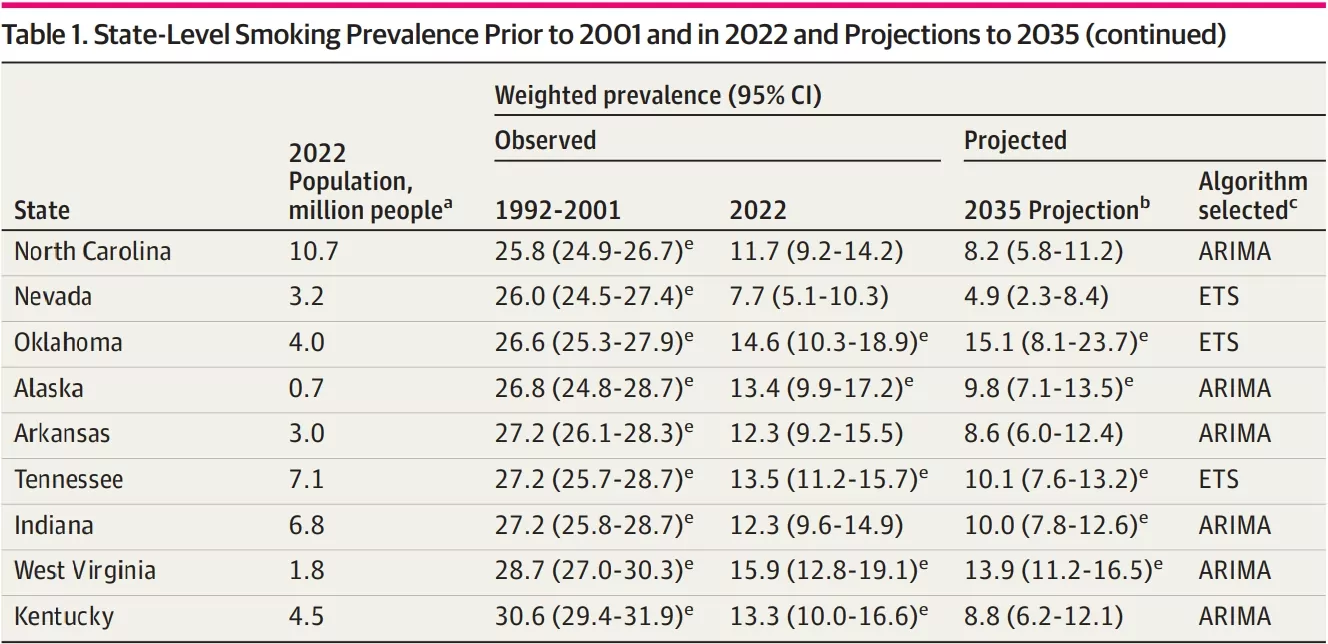Young Adults Fuel Historic Decline in US Smoking Rates, Study Finds
UC San Diego Research Projects National Smoking Prevalence Below 5% by 2035
A new study from the University of California San Diego reveals a significant and accelerating decline in cigarette smoking across the United States, driven primarily by young adults. The research, published in JAMA Network Open on April 25, 2025, offers optimistic projections for the future of smoking prevalence but also highlights persistent challenges among older smokers.
Analyzing data from over 1.77 million participants in the U.S. Census Bureau’s Current Population Survey from June to October 2024, researchers found that states with historically high smoking rates are now experiencing the most substantial drops. This suggests that public health interventions and changing social norms are having a particularly strong impact in areas where smoking was once most prevalent.
“The rapid decline in smoking among young adults is clear evidence that the smoking epidemic will come to an end in our lifetime,” stated Matthew Stone, Ph.D., first author of the study and assistant professor at UC San Diego. Dr. Stone projected that the national smoking prevalence could fall below 5% by 2035, a milestone that would effectively make smoking a rare behavior rather than a widespread public health crisis.
This projected decline continues a remarkable trend seen over the past 70 years. In 1955, over half of US adults (56.9%) smoked. By the turn of the century, that figure had been halved, and by 2022, it had dropped by another 50%, reaching historic lows.

However, the study also identified a critical challenge: progress in reducing smoking rates among adults aged 50 and older has been significantly slower. This demographic, particularly in states with a history of high smoking, continues to smoke at higher rates. Researchers warn that this slower decline among older adults could prolong the public health burden of smoking-related diseases, such as lung cancer, heart disease, and chronic obstructive pulmonary disease (COPD), which result from lifelong smoking habits.
Despite celebrating the overall success in reducing cigarette smoking, the study’s corresponding author, John P. Pierce, Ph.D., a Distinguished Professor at UC San Diego, raised concerns about the tobacco industry’s apparent success in recruiting a new generation into nicotine addiction through e-cigarette use. Dr. Pierce noted, “Recent evidence suggests that the tobacco industry has successfully recruited a new generation of teenagers into e-cigarette use and nicotine addiction.” He emphasized the need for further research to fully understand the long-term public health impact of this shift towards e-cigarettes.
While significant disparities in smoking prevalence persist across different demographics (age, sex, race and ethnicity, education), the study underscores the powerful impact of public health efforts and generational shifts in behavior. The progress among young adults provides a strong foundation for future declines, even as the slower pace of cessation among older populations remains a focus for public health initiatives aimed at reducing the long-term toll of smoking.
- Press release: Young Adults Drive Historic Decline in Smoking
- HHC Vapes: What Are They & Are They Safe? - July 31, 2025
- Cannabis and Vape Shop Workers Rank Happiest in Nation - July 31, 2025
- Richmond, VA, Restricts New Vape & Tobacco Shop Locations - July 31, 2025









